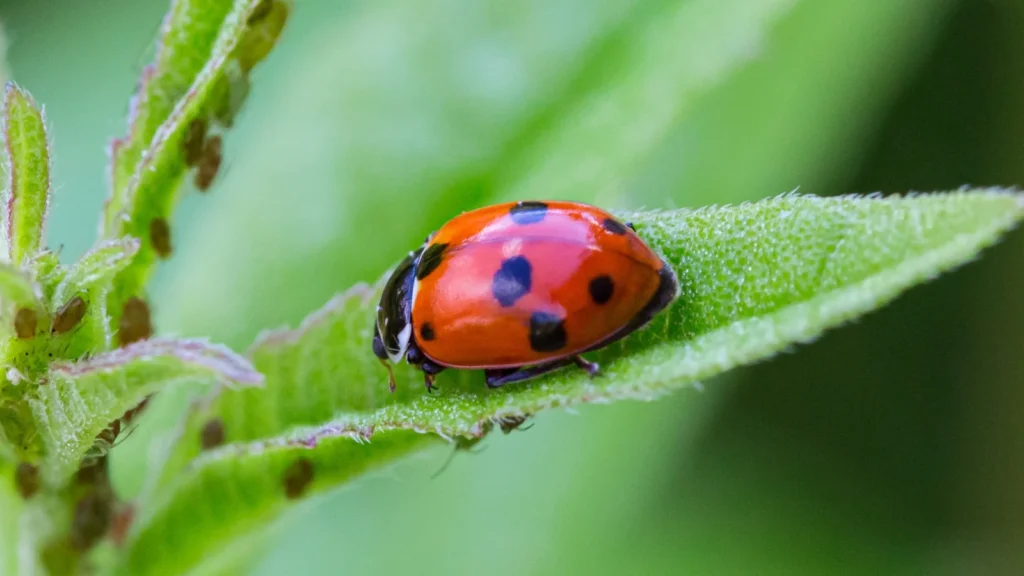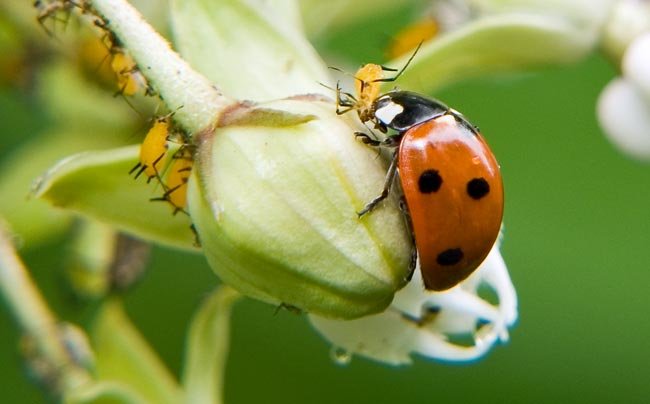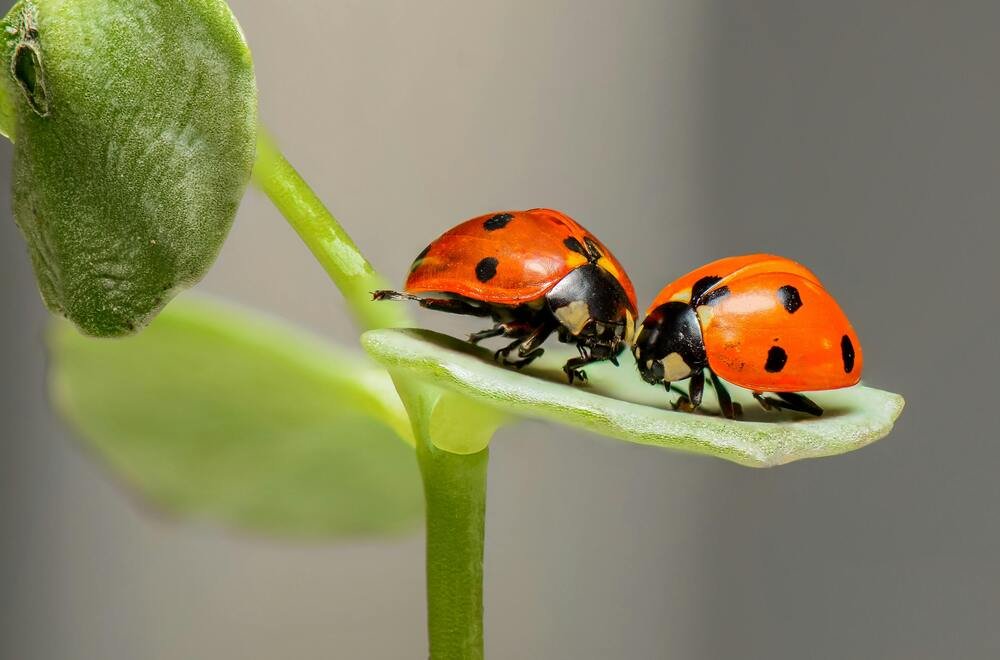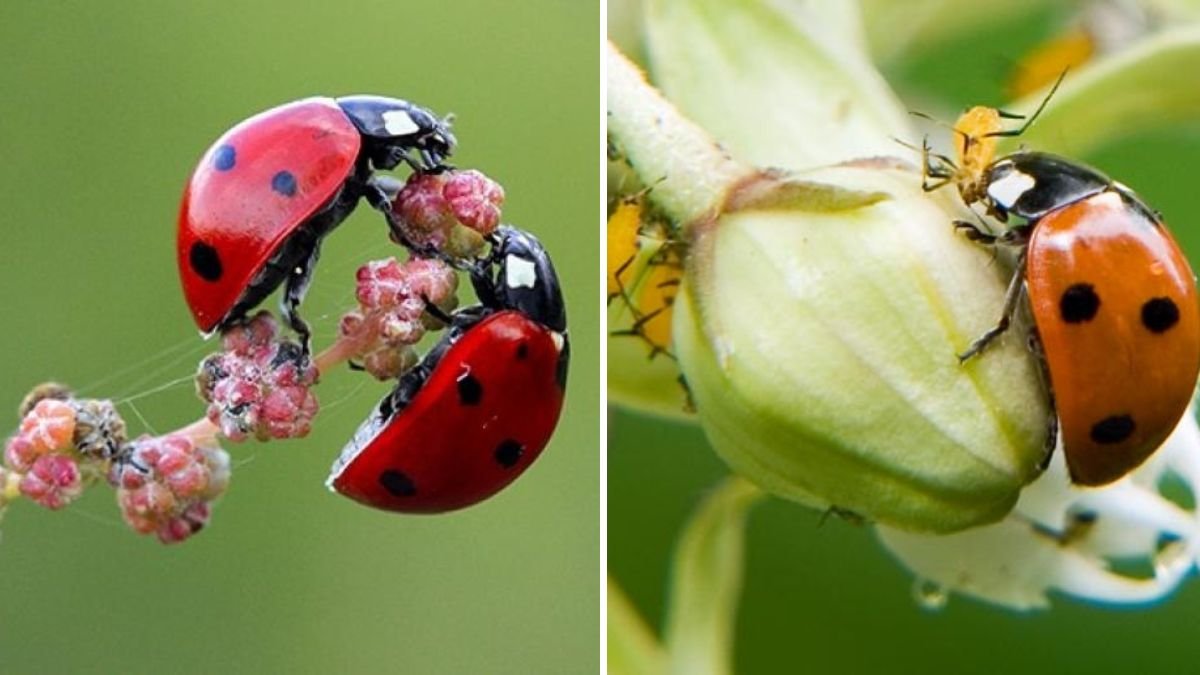Ladybugs, also known as lady beetles or ladybird beetles, are among the most beneficial insects a gardener can invite into their garden. Famous for their bright red or orange shells with black spots, these tiny predators are voracious consumers of aphids, scale insects, mites, and other pests that damage plants. Attracting ladybugs to your garden provides a natural, chemical-free way to protect crops, flowers, and ornamental plants.
This guide explores how to attract ladybugs effectively, the benefits of their presence, and best practices for sustaining a healthy population in your garden.
Understanding Ladybugs and Their Role in Pest Control

Ladybugs are natural predators of many common garden pests, particularly aphids.
Why Ladybugs Are Effective Against Aphids
- High consumption rate: A single ladybug can eat 50 aphids a day, and a single larva may consume up to 400 aphids during development.
- Targeted predation: Ladybugs feed mainly on soft-bodied pests, leaving beneficial insects unharmed.
- Lifecycle alignment: Ladybug larvae appear when aphid populations are rising, providing timely pest control.
By naturally reducing aphid populations, ladybugs help maintain plant health, reduce disease spread, and increase crop yields without chemical intervention.
Method 1: Plant Aphid-Friendly Flowers and Herbs

Ladybugs are attracted to gardens that provide both food and habitat. Planting certain flowers and herbs can lure them in and encourage them to stay.
Recommended Plants
- Dill, Fennel, and Cilantro: These herbs produce small flowers that attract ladybugs and other beneficial insects.
- Marigolds: Bright blooms are visually attractive and provide pollen for adult ladybugs.
- Yarrow and Cosmos: Open flowers provide easy landing sites and access to nectar.
- Sunflowers: Tall flowers give perching spots and support ladybug movement across the garden.
Tips for Planting
- Include a variety of flowering plants to provide a continuous food source.
- Plant in clusters to make flowers more visible and accessible.
- Avoid hybrid flowers with tightly closed petals that restrict insect access.
By planting these species, you create a garden ecosystem that naturally invites ladybugs and supports their survival.
Method 2: Provide Shelter and Habitat

Ladybugs need shelter to survive, reproduce, and lay eggs. Creating habitat in your garden ensures they remain present to control pests.
Shelter Options
- Ground cover: Low-growing plants, clover, or dense foliage provide hiding spots for ladybugs.
- Mulch and leaf litter: Natural mulch protects ladybugs from predators and harsh weather.
- Ladybug houses: Small, ventilated boxes filled with twigs or straw can mimic natural crevices.
Habitat Tips
- Place shelters near aphid-prone plants to ensure ladybugs have immediate access to prey.
- Maintain moisture in the garden without overwatering; ladybugs need a humid but not soggy environment.
- Avoid disturbing leaf litter and natural shelters during critical growth periods.
Proper shelter not only attracts ladybugs but also encourages egg-laying and reproduction, increasing your garden’s natural pest control potential.
Method 3: Provide a Food Source for Adult Ladybugs

Adult ladybugs feed on nectar and pollen in addition to aphids. Ensuring access to these food sources encourages them to stay in your garden longer.
Key Nectar and Pollen Plants
- Alyssum
- Dill, fennel, and coriander flowers
- Goldenrod and tansy
- Cosmos and yarrow
Tips for Maintaining Food Supply
- Ensure at least one flowering plant is in bloom throughout the growing season.
- Avoid insecticides on flowering plants, as this can harm ladybugs.
- Provide shallow dishes of water to supplement hydration.
By combining prey availability (aphids) and food plants, your garden becomes a ladybug-friendly habitat that encourages natural pest control.
Method 4: Release Purchased Ladybugs

In addition to attracting wild ladybugs, gardeners can purchase ladybugs from reputable suppliers and release them strategically.
Release Guidelines
- Release ladybugs in the evening or early morning when temperatures are cooler.
- Spray garden plants lightly with water before release to provide moisture.
- Focus on aphid-infested areas to ensure ladybugs have immediate food.
- Avoid releasing during extremely hot or sunny periods, as ladybugs may fly away.
Tips for Success
- Release multiple batches if necessary, as some ladybugs may leave temporarily.
- Combine with habitat and food planting to encourage retention.
- Use ladybugs as part of an integrated pest management plan, not as a standalone solution.
Releasing ladybugs can give your garden a rapid boost in pest control, especially early in the season.
Method 5: Avoid Chemicals That Harm Ladybugs
Pesticides, herbicides, and chemical fertilizers can kill ladybugs or reduce their food supply. To support their population:
Best Practices
- Avoid broad-spectrum insecticides that harm beneficial insects.
- Use organic pest control methods such as neem oil, insecticidal soap, or diatomaceous earth only when necessary.
- Maintain chemical-free flowering plants for nectar and pollen sources.
By reducing chemical exposure, you help sustain a healthy ladybug population, ensuring ongoing natural pest control.
Method 6: Monitor and Maintain Aphid Populations
Ladybugs require a sufficient supply of aphids or other soft-bodied insects to thrive. Monitoring pest populations ensures ladybugs remain effective:
Tips for Garden Monitoring
- Check plants regularly for aphid clusters on stems, leaves, and buds.
- Avoid eliminating all aphids immediately; small populations provide food for ladybugs.
- Encourage a balance where ladybugs control pests without allowing infestation to escalate.
Monitoring allows gardeners to maintain a self-sustaining predator-prey balance that keeps the garden healthy.
Benefits of Attracting Ladybugs
- Natural pest control: Reduces aphid damage and disease transmission.
- Chemical reduction: Minimizes the need for pesticides, promoting safer gardening.
- Enhanced biodiversity: Supports other beneficial insects and pollinators.
- Cost-effective: Ladybugs provide ongoing pest control with minimal maintenance.
- Educational and enjoyable: Observing ladybugs offers insight into ecological relationships and garden dynamics.
Ladybugs are a key component of a balanced, resilient garden ecosystem, offering both practical and aesthetic benefits.
Common Misconceptions About Ladybugs
Misconception 1: Ladybugs Only Eat Aphids
- While aphids are a primary food source, ladybugs also consume mites, scale insects, thrips, and small insect eggs.
- They rarely harm plants or flowers directly.
Misconception 2: Releasing Ladybugs Guarantees Pest Control
- Ladybugs may leave if the garden lacks food, shelter, or water.
- Creating a suitable environment is crucial for retention.
Misconception 3: Ladybugs Can Replace All Pest Control Methods
- Ladybugs are most effective as part of an integrated pest management strategy.
- Combining habitat management, companion planting, and chemical-free pest control maximizes results.
Understanding these misconceptions ensures realistic expectations and better results when attracting ladybugs.
Conclusion
Ladybugs are natural allies in the garden, offering eco-friendly, efficient, and effective pest control. By attracting and sustaining ladybug populations, gardeners can reduce aphid damage, minimize chemical use, and promote biodiversity.
Key strategies include:
- Planting aphid-friendly flowers and herbs.
- Providing shelter and habitat with dense foliage, mulch, and ladybug houses.
- Ensuring food sources through nectar and pollen-rich plants.
- Releasing purchased ladybugs strategically.
- Avoiding chemicals that harm beneficial insects.
- Monitoring and maintaining a balanced aphid population.
By integrating these approaches, gardeners can foster a thriving, self-sustaining ecosystem where ladybugs and other beneficial insects protect plants naturally. Encouraging ladybugs not only helps control pests but also creates a more vibrant, resilient, and enjoyable garden for humans and wildlife alike.
